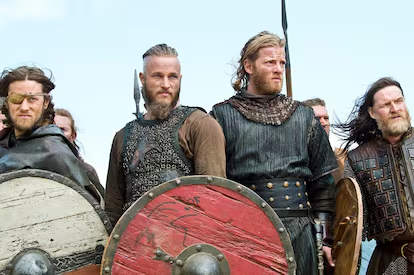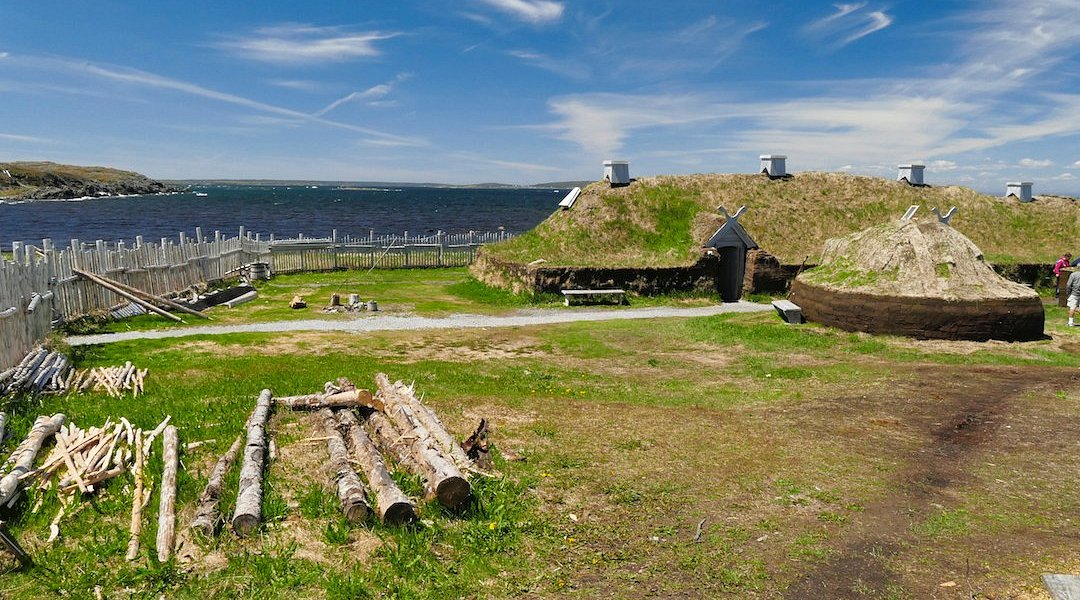Viking women in Norse society were much more than wives or mothers.
Their daily lives, clothing, footwear, and responsibilities reflect an active role in Viking culture, which included household management, land management, and, in some cases, participation in raiding and trading activities.
Archaeological discoveries have made it possible to reconstruct her history, demystifying the idea of a passive woman in the Viking Age.

Archaeology and female legacy
Viking female burials provide insight into the clothing, accessories, amulets, and social status of Norse women.
Among the objects found were brooches, combs, scissors, spindles, dyed textiles, and amulets with symbols such as Thor's hammer, ravens, and feminine motifs.
This shows that Norse women had a strong and symbolic identity within Viking society.
Women's clothing in the Viking Age
The undergarment, known as särk or kyrtle, was a natural linen tunic, worn as a first layer for thermal protection and hygiene.
Over this, they wore a woolen hanger or apron dress, in dyed colors such as blue, green, brown or red.
Metal brooches and decorative embroidery, made on vertical looms, indicated family status and wealth.

Footwear and accessories
Viking footwear was made of tanned leather, sewn with sinew or linen thread, and fastened with laces or buckles.
In winter, wool-lined boots and felt socks were worn. Viking women also wore bronze, silver, or amber jewelry, including necklaces, rings, earrings, decorative combs, and leather pouches attached to their belts.
Daily life and responsibilities
In Norse society, Viking women were responsible for the home, managing land, raising children, and caring for animals.
They could inherit property, something unusual in medieval Europe.
Some worked as healers, priestesses or völvas, and even acted as merchants.
Their role was vital to the economy and community life.

Viking warrior women
Although many popular beliefs hold that Norse warriors are a myth, recent archaeological discoveries have demonstrated real cases.
In Birka, Sweden, a DNA study revealed that a tomb attributed to a warrior belonged to a woman, with weapons, military chess pieces, horses, and symbols of command.
This shows that some Viking women could hold military ranks and participate in raids.
The skjaldmö
Skjaldmö, such as Brynhildr or Lagertha, combined the roles of warriors and seers, reflecting the ability of Viking women to stand out in Norse society.
Their existence demonstrates that women could have military and spiritual authority.

Neither invisible nor weak
Viking women were not passive figures. Their influence encompassed family, economic, spiritual, and military spheres.
Their clothing, footwear, jewelry, and amulets show that feminine strength was visible and respected, cementing their importance in Viking history and cultural legacy.
Furthermore, their role in Norse society ensured the continuity of traditions, the protection of family property, the education of children, the management of resources, and participation in religious ceremonies, demonstrating that they were essential to the survival and stability of Viking communities.
Today, for many, they represent a symbol and example of feminine strength and power.
You can find everything you need to create your own Viking style in our Medieval Shop .









